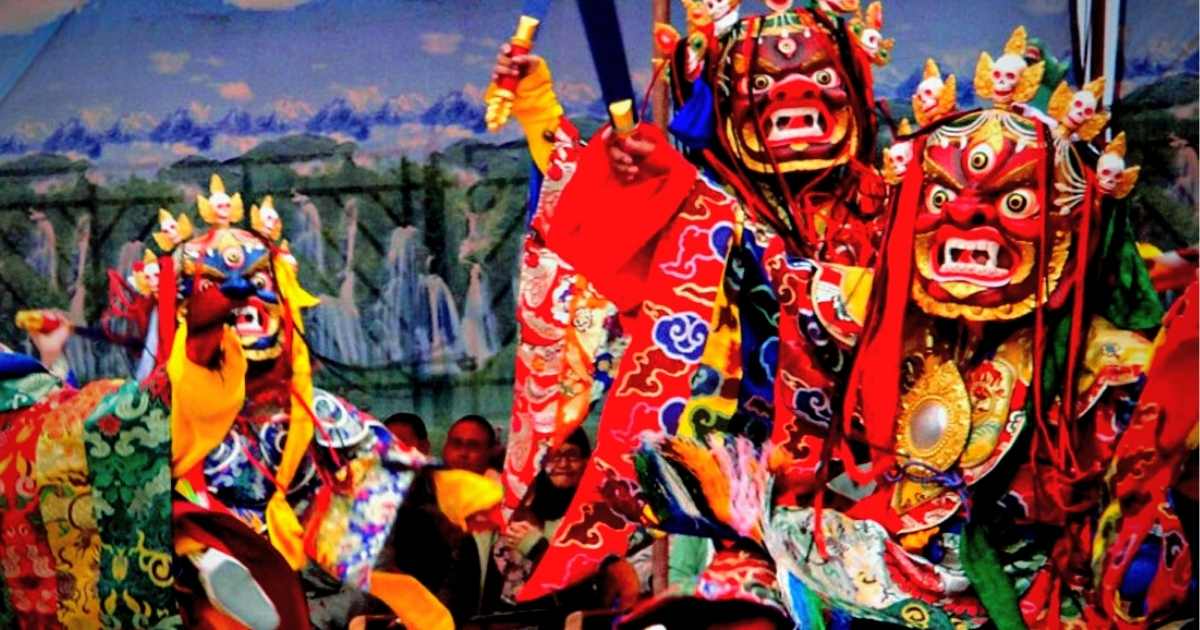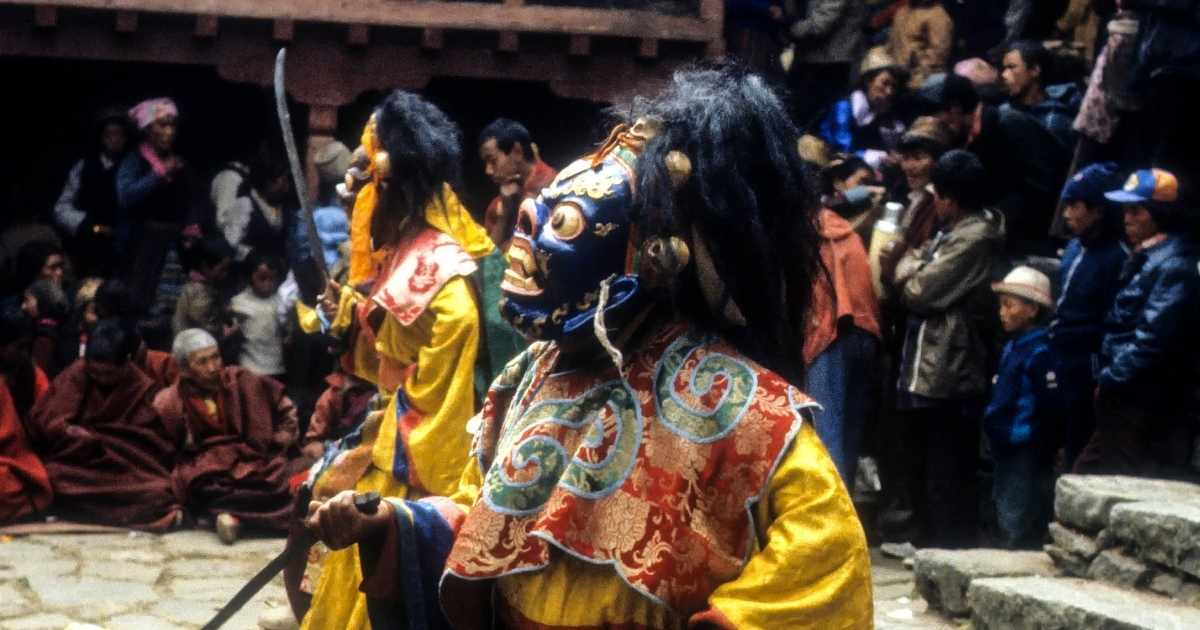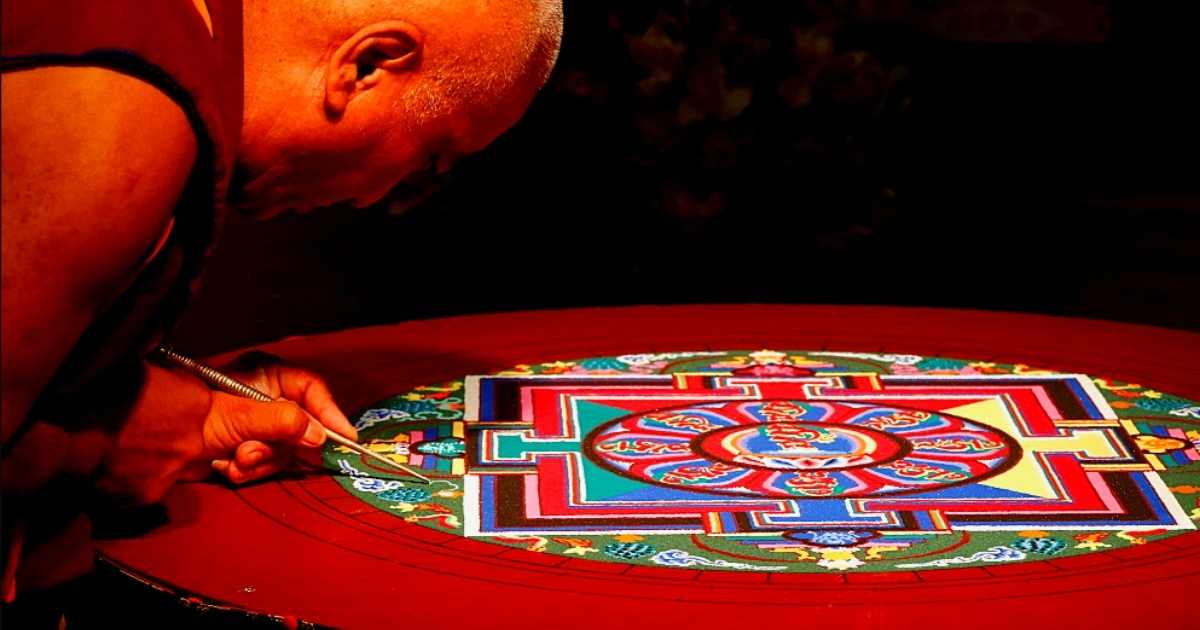
The Mani Rimdu Festival: Ancient Sherpa Festival

The Mani Rimdu Festival: Ancient Sherpa Festival
swotah travel
2945
16, 10 2022
One of the ancient ceremonies of the Sherpa people who live in the Everest region is the Mani Rimdu festival. This festival has events scheduled for 19 days straight. The final three days of the event are designated for public viewing. Mani signifies "part of the chant of Chenrezig," and Rilbu or Rimdu indicates the small red pills that are blessed during the festival, according to the meaning assigned to the phrase "Mani Rimdu." The red tablets are frequently blessed before being given out to everyone attending the Mani Rimdu celebration in the Khumbu district.
The main location for the Mani Rimdu festival is Tengboche Monastery (3867 meters). It is the biggest monastery nearby, dating back to 1916, and is situated in Tengboche village in Khumbu, in eastern Nepal. Rongbuk, a Tibetan Buddhist monastery of the Nyingma sect in Basum in Shigatse Prefecture in Tibet, is the mother monastery of Tengboche Monastery. Tengboche Monastery's location within Sagarmatha National Park, the highest natural park in the world, is another intriguing feature of the monastery.
How old is the Mani Rimdu Festival?
Rongbuk monastery is considered to have been the origin of the Mani Rimdu festival. This holiday commemorates Guru Rinpoche's introduction of Buddhism to Tibet (Padmasambhava). The dances performed at the festival are symbolic of the mythological occurrences where good forces drive out evil and demons. Mani Rimdu, according to Trulshik Rinpoche, began between 1907 and 1910 and relocated to Solukhumbu around 1940. This event was first held in Nepal at Tengboche Monastery. Jerstad and Furer-Haimendorf claim that the first Mani Rimdu performance in Tengboche occurred in 1938.

The beginning of Buddhism in Tibet by the great saint Rinpoche is recreated in this festival. The resident Tengboche Rinpoche of the monastery blesses the general audience after the festivities, and then the monks perform the "Mask Dances."
When the Mani Rimdu festival occurs in the fall, tourists like to stay close to the Tengboche monastery. The Tengboche monastery is located on several routes leading to Everest Base Camp. The Tengboche monastery receives about 15,000 people overall each year, with 600 visits per week on average throughout the autumn. Tengboche Monastery and Mani Rimdu are hence two of Nepal's top tourism destinations.
When is the Mani Rimdu Festival celebrated?
The Himalayan Buddhists warmly welcome the imprint left by Guru Rinpoche Padmasambhava, who founded Buddhism. This ancient festival is observed beginning on the first day of the tenth month by the Tibetan lunar calendar. That indicates that they observe it between October and November following the fall full moon, according to the English calendar. It immediately follows Kojagrat Purnima, the fifteenth or final day of Dashain, or the day of the full moon, in the Nepali calendar.
You are carried away to the historic Mani Rimdu Festival by the lovely aroma of burning sticks, the amazing crafts on the walls, the calming music, and the chanting of hymns. Buddhists in Nepal's Everest Region commemorate Mani Rimdu over a period of 19 days.

The prayer wheels play music of thanksgiving for living a joyful life. The prayer flags that line these areas serve as a reminder of your freedom to travel to interesting places in life. Mani Rimdu undoubtedly had an impact when you realised you were what you had been searching for. You give off light like an oil lamp, and your travel narrative will be one of beautiful scenery.
The dates of the Mani Rimdu festival are set by the yearly lunar cycle because the community uses the Tibetan lunar calendar. Accordingly, the Tengboche Monastery's head Lama announces the dates. Mani Rimdu is performed in Tengboche during the ninth Tibetan month, which on the Gregorian calendar usually corresponds to November. To be precise, the celebration dates vary depending on where the monasteries are. For instance, six months after the celebrations at Tengboche, the Thame monastery celebrated Mani Rimdu.
Why is Mani Rimdu so important a festival?
Three events are commemorated with breathtaking performances at the Chiwong, Thame, and Tengboche monasteries in Nepal's Solukhumbu region. In these monasteries, Buddhist monks create sacred ritualistic dances that they perform while wearing masks and costumes, as well as Tantric ceremonies.
The main purpose of these dances is to provide color to the celebration of Buddhism's victory against Bon. The monastic community's Lamas and Sherpas offer a sacred series of prayers for empowerment. Both locals and visitors join large throngs to celebrate. According to one, it's the best journey reward ever.
How is Mani Rimdu celebrated?
The Mani Rimdu festival is a days-long series. There are various special arrangements made for each different day.
Sand Mandala Formation
Buddhists use colored sand to build sand mandalas in an extremely intricate and symbolic procedure. The primary idol of Mani Rimdu, the Buddha of Kindness, is the main focal point of this construction. A bowl of Mani Rilwu tablets (spiritual medicine) is positioned above the Mandala's center, and the protective blades encircling it represent the numerous gods they revere.

According to a popular theory, kindness comes freely during meditation along with the Mandala and Mani Rilwu tablets in "mantra form." Therefore, the majority of attendees come to the event with the hopes of finding kindness.
Wong
The event is made accessible to the general public on the full moon day of the tenth month in the Tibetan lunar calendar. Then they give the attendees Rilwu (holy or blessed pills) and Tshereel pills while blessing them for long life. People are said to be empowered by the Rilwu or the Tshereel. The guests, therefore, accept Prasad with the utmost sincerity.
Chham
Dance traditions abound on Mani Rimdu's second day. The transition of Protectors of Dharma, where the figurative demons are vanquished and chased away, is personalized in the holy dances.
Through thematic dances, they encourage the forces of good to combat the forces of disorder. The dances communicate Buddhist teaching in a variety of ways, from the most basic to the most abstract.
Ser-Kyem
"Ser" in Tibetan means "gold," while "Kyem" means "drink." Ser-Kyem consists of a bigger raised bowl in the shape of a dish and a smaller dish standing upright (offering bowl). Tea offerings are made with it for Dharma guardians like Mahakala. They also serve many additional purposes, providing spiritual nectars.
Nag-pa and the Tantric magicians stand in for the ceremony's six dancers. The practice of Tibetan Buddhism is essential to attaining enlightenment and virtue. For this reason, they present the Khandro, Lama, Yidam, and Shi-Dak with tiny tormas and wine in silver cups.
Fire Puja
The Fire Puja represents a sacrifice made to the mandala gods and the deity of fire, Agni, to appease potential worldly harm. Burning the grain and ghee allows us visualization of the injury. They offer the sand to the snake gods once the sand mandala has deformed.
Chhingpa
Chhingpa refers to a dance's presentation theme as Four Protecting Ghings, protecting Buddhism from the demonic onslaught. Glistening paper masks conceal the dancers' colorful, perpetually smiling faces. The dancers move rhythmically to the beat of cymbals concealed behind glistening paper masks. They occasionally frighten spectators, including young children.
Only during the Mani Rimdu festival is the dance performed, and only special monks who have received permission from the top monks are allowed to do so. It is unable to function on other typical days and situations. The dance performed during the ceremony is not just for performance; rather, it is a religious celebration of a deity. In this tale, the goddess vanquishes demons and shields the righteous from evil. The Tengboche Mani Rimdu event, in particular, lasts for three days.
Conclusion
Mani Rimdu is a fantastic chance to celebrate the Sherpa and Tibetan community's rituals. They get to assemble at the monastery wearing traditional attire and accessories enthusiastically. Both locals and visitors from abroad are in attendance. The Tengboche Mani Rimdu festival trip rewards you with the opportunity to observe the genuine and distinctive Sherpa culture as well as the gorgeous Himalayan landscape. The best time to take this journey is when it is paired with an excursion to Mount Everest Base Camp, the Everest Chola Pass Trek, or the Gokyo Lakes Trek.
NEWSLETTER SIGNUP
Sign up to receive our trip ideas and travel offers!
Get updates and Exclusive Offers up to 20% Discount








